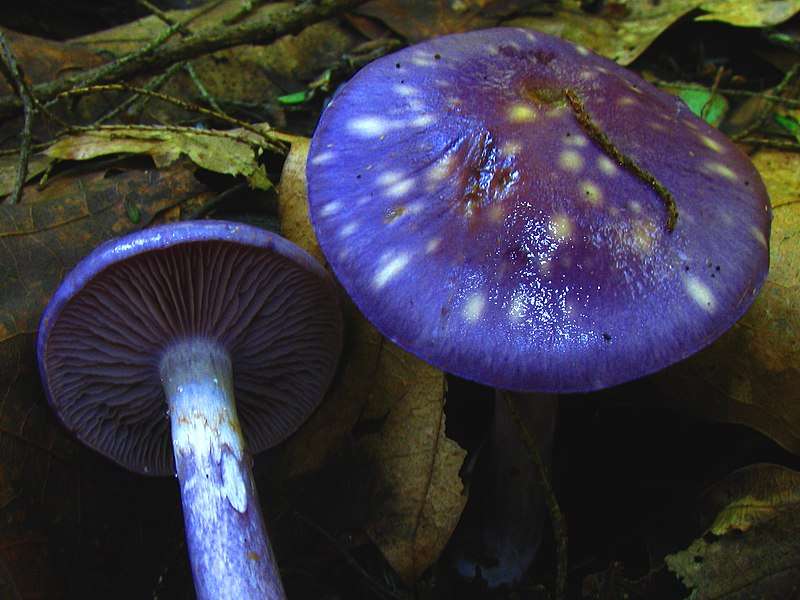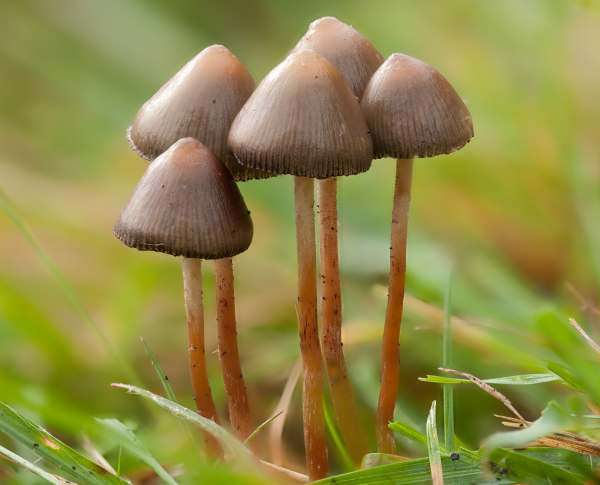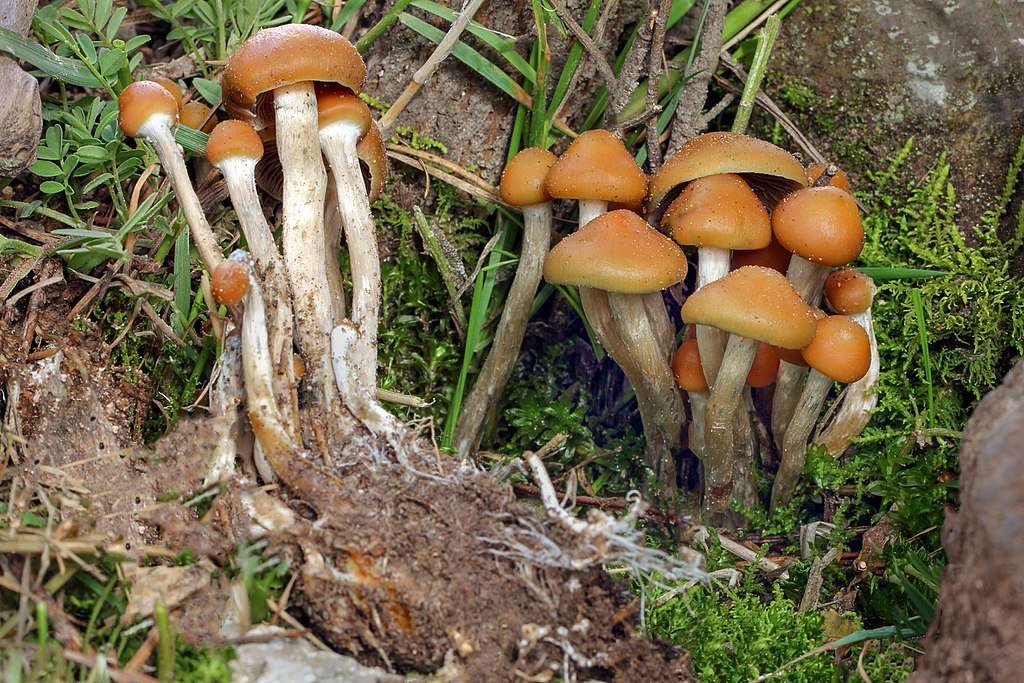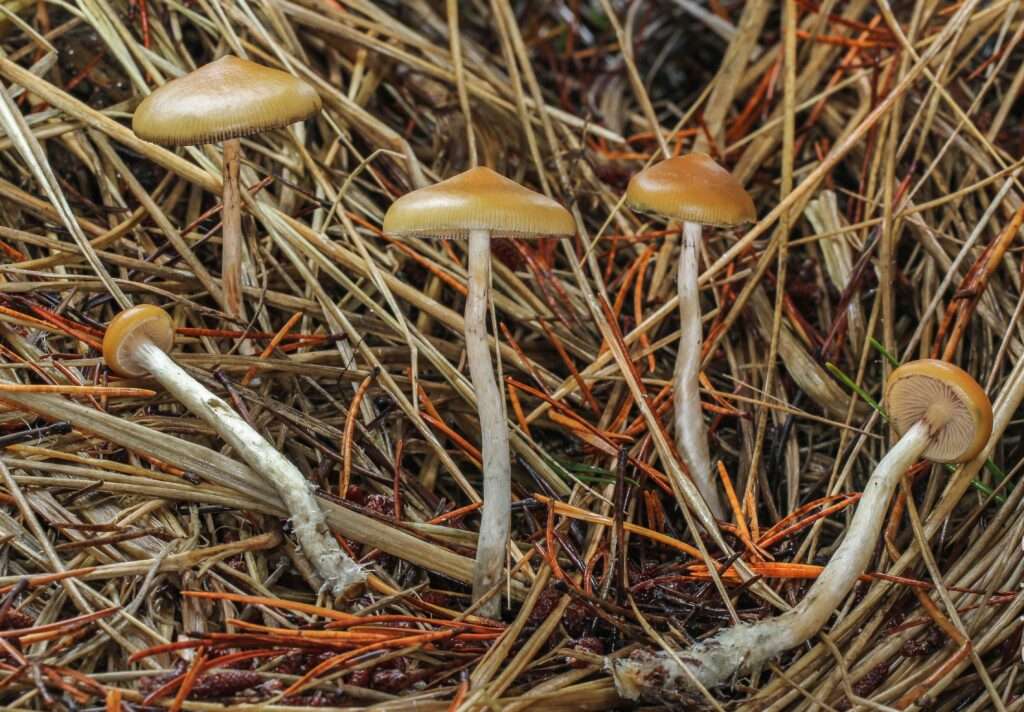
Scientific name
Cortinarius iodes
Description
Spotted Cort mushroom is an agaric fungus that is also known as viscid violet cort. They have small and slimy purple caps with a diameter of 6 cm. Their fruiting bodies acquire yellowish dots and streaks as they get mature. As the mushroom grows, the gill color turns from violet to grayish brown. These mushrooms grow on the soil in a mycorrhizal connection with deciduous trees.
When immature, the caps of these mushrooms are dark purple, initially hemispherical and then extended with a little umbo but typically maintaining an enrolled border. At maturity, the diameter of their cap ranges from 6-12cm. When juvenile, adnate gills are fairly scattered and are purple in color. The gills develop rusty brown as the spores grow and are finally stained black by the spores. The spores are almond in shape, thick-walled, in amyloid, and have a diameter of 11.5-14.5 x 7-9μm. The stem is violet and fibrous, with a somewhat clavate base. It is usually 1- 2 cm in diameter but can be up to 3- 4 cm at the base. The flesh of the stem is similarly purple.

Habitat
The spotted cort mushroom is native to Central America, northern Asia, and North America. These mushrooms grow in a symbiotic relationship with deciduous forest trees and are mostly found in alkaline soil. They are also found under conifers.
Uses/Importance
The spotted cort mushroom plays an important role in the ecosystem. The mycelium of this mushroom forms a coating over the rootlets, allowing the tree to receive water and nutrients. These mushrooms are also helpful in the improvement of kidney functions and inhibition of dialysis and kidney transplantations.
Table





